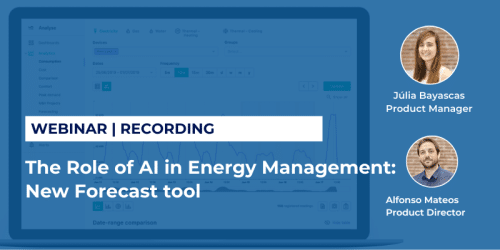In today’s rapidly evolving business landscape, where 70% of operational costs are tied to facility management, developing a solid facility management strategy is not just beneficial—it’s essential. Facility management (FM) goes beyond overseeing physical buildings; it enhances the efficiency and longevity of an organization’s assets while ensuring a safe, productive working environment for all.
But what makes a facility management strategy stand out, and how can companies tailor such a strategy to fit their unique needs? Let’s delve into the details.
What is a facility management strategy?
A facility management strategy is a comprehensive plan that outlines how an organization’s physical assets and environments will be managed and maintained to support its core business operations. It encompasses a wide array of functions, from space planning and infrastructure maintenance to safety protocols and environmental sustainability. The goal? Optimizing facility performance, extending asset life cycles, and ultimately, driving organizational efficiency and cost-effectiveness. The strategy goes beyond fixing what’s broken; it ensures the (proactive) creation of spaces that drive productivity and innovation.

4 reasons why companies have or need a facility management strategy
A well-defined FM strategy is the backbone of operational excellence. It enables businesses to:
- Reduce costs: by optimizing asset use and implementing preventive maintenance, companies can significantly lower operational expenses. The economic efficiency of predictive maintenance typically averages between 12% and 25%.
- Enhance safety and compliance: a strategic approach to FM ensures that facilities meet regulatory standards and provide a safe environment for employees and visitors.
- Boost productivity: well-maintained and efficiently managed facilities contribute to a more productive and satisfying work environment, directly impacting employee performance and happiness. Enhancing employee happiness can result in a 20% boost in productivity.
- Sustainability: incorporating green practices within FM strategies helps companies reduce their environmental footprint, aligning with global sustainability goals and brand ambitions.
Key components of a facility management strategy
An effective facility management (FM) strategy is multifaceted, designed to ensure the seamless operation and sustainability of a company’s physical assets and work environment.
Asset management
At its core, it includes asset management, which is focused on maintaining and upgrading physical properties for optimal performance, such as implementing a preventive maintenance schedule for HVAC systems to extend their lifespan. By proactively scheduling maintenance tasks, companies can significantly lower the risk of equipment failure, increase uptime and availability of equipment, and reduce emergency repair costs.
Space optimization
Space optimization is another crucial component. This aspect involves the efficient use of workspaces to adapt to the company’s evolving needs and work styles, like reconfiguring office layouts to support hybrid work models.
Energy management
Energy management is key to reducing consumption and costs, with initiatives like retrofitting buildings with LED lighting to enhance energy efficiency while contributing to economic and environmental goals. Utilizing an Energy Management System (EMS) to oversee energy usage within your organization can result in potential energy savings of up to 30%.
Safety and compliance
Ensuring safety and compliance is foundational, requiring strategies to meet health, safety, and industry-specific regulatory standards. Regular safety drills and compliance audits are an integral part of a best-in-class facility management strategy.
Integration of technology
Lastly, the integration of modern technology, including IoT and AI, enhances facility management processes. For instance, , using smart sensors to monitor and adjust lighting and temperature in real-time for increased comfort and efficiency. Together, these building blocks form a comprehensive FM approach that supports the overall success and efficiency of property and facility operations.
Implementing the facility management strategy
Implementing a comprehensive facility management strategy is a critical process for organizations aiming to optimize their physical assets and work environments. This process involves a thoughtful blend of planning, technology, and best practices to ensure that facilities not only meet current operational needs but are also adaptable.
1) Assessment of the current facility management situation
First and foremost, strategic facility planning begins with a thorough assessment of your organization’s current facility management strategy. It’s crucial to have a clear picture of where your organization stands before mapping out where to go. This mapping involves evaluating your facility’s capacity and utilization: key indicators that guide decision-making in facility management. By understanding these elements, you can identify potential areas for improvement or expansion, ensuring that the facility management plan supports the organization’s long-term goals.
After understanding how the facility management currently performs, the next step is to understand what success looks like: is it about optimizing space utilization, enhancing employee productivity, or perhaps, implementing sustainable practices? Once these goals are defined, the next step is developing a facility management plan guide that outlines the specific steps needed to achieve these objectives.
In the journey of aligning facility management strategies with organizational goals, it’s crucial to view the facility management plan not just as a series of tasks to maintain physical assets but as a strategic framework that moves the organization forward. This alignment ensures that every decision made within facility management directly contributes to the broader objectives of the organization, be it enhancing productivity, sustainability, or employee well-being.
2) Implementing the plan in the organization
With a strategic plan in hand, the focus shifts to implementation. This phase involves putting the plan into action through detailed project management, resource allocation, and scheduling. It’s crucial to maintain open lines of communication with all stakeholders to ensure buy-in and to minimize disruptions to operations. Effective implementation also requires flexibility: unforeseen challenges may arise, necessitating adjustments to the plan. Monitoring progress against the plan’s milestones gives way to timely interventions and keeps the project on track.
To achieve this, facility managers must possess top-notch project management skills, carefully coordinating with vendors, contractors, and internal teams. They need to continuously align efforts and ensure all activities contribute to the strategic objectives. Their responsibilities often involve overseeing renovations, deploying new technologies, and reconfiguring spaces to enhance efficiency and functionality.
3) Monitoring the facility management plan
Monitoring the facility management plan involves regular check-ins to assess performance against set objectives. This continuous oversight ensures that the operations align with the broader organizational strategy, allowing for real-time adjustments.
When evaluating, on the other hand, facility managers dive deeper into the data. They analyze data and feedback to understand the effectiveness of the facility management plan guide. This step is crucial in celebrating successes, identifying areas for improvement and taking action on these insights.
4) Evaluating and updating the strategy
Adaptation is the final, yet ongoing, phase. The business landscape is ever-changing, and so are the needs of the facilities. Adapting the facility management plan ensures that it remains relevant and effective. Whether it’s integrating new technologies, responding to shifts in workplace dynamics, or implementing sustainability initiatives, flexibility is key. By embracing a culture of continuous improvement, you ensure your facility management strategy not only meets but even exceeds expectations. This attitude and your corresponding actions help drive your organization towards its vision.
Keeping track of the facility strategy performance
Performance measurement is critical to the success of any FM strategy. Key Performance Indicators (KPIs) such as operational costs, energy efficiency, and space utilization rates provide valuable insights into how well the strategy is working. Regular reviews and adjustments based on these metrics ensure the strategy remains aligned with organizational objectives and adapts to changing needs.
To track these KPIs, facility managers can leverage advanced facility management software and IoT sensors that collect real-time data, providing ongoing insights into facility operations. Analyzing trends and deviations in these KPIs helps in identifying areas that require attention. For instance, understanding the office space occupancy patterns, helps determine ways to reduce costs. Through this continuous cycle of measurement, analysis, and adjustment, facility performance can be systematically enhanced to meet and exceed organizational objectives.
How software enhances your facility management strategy
In the ever-evolving landscape of facility management, the integration of technology has become a cornerstone of the development and enhancement of facility management strategies. Spacewell stands at the forefront of this transformation, offering best-in-class, recognized solutions that seamlessly align with your facility management plan guide. Our software technology aids in simplifying operations and offers insights that enhance efficiency, sustainability, and cost-effectiveness in various aspects of facility management.
At the heart of our solutions is the ability to turn data into decisions. Our tools empower facility managers with real-time analytics and predictive maintenance capabilities, ensuring that every aspect of your facility management plan is optimized for peak performance.











